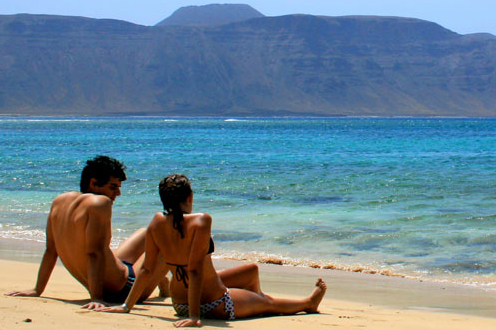Coronavirus COVID-19
CSIC researchers explain how SARS-CoV-2 might spread on beaches and at swimming pools
News - 2020.5.7
Researchers at the National Scientific Research Council (CSIC), managed under the Ministry of Science and Innovation, have drawn up a report compiling current knowledge on how the SARS-CoV-2 virus, which causes the COVID-19 disease, is spread in spaces used for bathing and other aquatic activities. The report was written following a request from the State Secretariat of Tourism as part of the actions being defined by the Ministry of Industry, Trade and Tourism to resume activity in the tourism sector.
As an introduction, the authors stress that the main modes of transmission for SARS-CoV-2 in the environments discussed by the report (swimming pools, beaches, rivers, etc.) are through the respiratory secretions from coughing or sneezing and person-to-person contact, so the general recommendations for anywhere else should also be followed in these areas.
Furthermore, the crowds that can gather in swimming pools and at beaches, as well as shared objects, may continue to serve as contagion mechanisms. Other possible modes of contagion that were examined are those stemming from the presence of the virus in wastewater that may reach masses of water used for bathing and survival of the virus from bathers in water, on the sand and on surrounding surfaces.
The report has been drawn up by seven researchers at CSIC centres: Ana Allende, at the Segura Centre for Edaphology and Applied Biology (Spanish acronym: CEBAS-CSIC); Alicia de Andrés, at the Madrid Institute for Material Sciences (Spanish acronym: ICMM-CSIC); Antonio Figueras, at the Institute for Marine Research (Spanish acronym: IIM-CSIC); Gloria Sánchez, at the Institute for Agro-chemistry and Food Technology (Spanish acronym: IATA-CSIC); Joan Grimalt and Teresa Moreno, at the Institute for Environmental Diagnosis and Water Studies (Spanish acronym: IDAEA-CSIC); and Carlos Prieto, Deputy Vice-President of Techno-scientific Areas of the CSIC.
The researchers based their report on the scientific literature available to date in order to offer a series of indications and recommendations for spaces used for recreational aquatic activities.
Considerations for recreational aquatic spaces
The report states that, during recreational activity, infection by SARS-CoV-2 through contact with water under normal bathing conditions is highly unlikely. However, these activities generally imply a loss of the recommended social distancing measures.
The use of disinfectant agents is broadly implemented at swimming pools and spas to prevent microbial contamination of the water through users, and this measure should be enough to render the virus inactive.
The aerosols generated at a spa or medicinal waters installation will have the same disinfection characteristics as the bathing water at these installations. In those cases where the atmosphere of the installation is maintained at high temperatures, such as inside saunas and steam rooms, survival of the virus is expected to be reduced by the high temperature (>60ºC).
In turn, regarding sea water, the report states that, although no data currently exist pertaining to the persistence of SARS-CoV-2, the dilution effect and the presence of salt are factors that will probably help to reduce the viral load and render it inactive, through analogy to what happens with similar viruses.
However, the survival of SARS-CoV-2 in untreated rivers, lakes and freshwater springs is better in comparison with swimming pools and salt water. As a result, precautionary measures should be maximised to avoid crowds as these are the most inadvisable bodies of water in comparison with other alternatives.
Another factor that may be of concern is the prevalence of the virus in beach or riverbank sand. Although there are no experimental studies in this regard, the combined action of the salt from sea water, ultraviolet solar radiation and the high temperatures that can be reached by sand are favourable to rendering pathogens inactive. The report also highlights that any form of beach sand disinfection should be environmentally friendly and such disinfection using the standard procedures for public urban spaces is not recommended.
Non official translation





